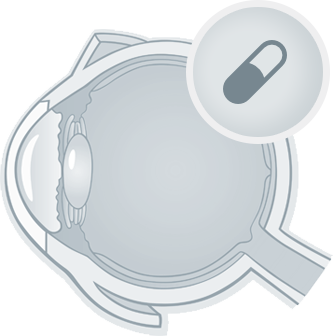CAUSES
A severe trauma to the eye can cause damage to the lens which in turn causes the cataract in the eye that has suffered the trauma.
But it is also important to consider that the blow or wound may have affected other eye structures causing injuries of greater or lesser severity.
Hence the importance of assessing the overall damage of the eye in such cases, as this will determine the type of surgery to be performed, as well as the complications that may occur in the development of the eye or subsequent to such surgery.
SYMPTOMS
In the case of traumatic cataracts, rather than symptoms, it is necessary to talk about the extent of the injury produced in the eye, classified according to three groups:
- No associated wounds. The opacity of the lens begins at the posterior part in the form of a fern or rosette, although in some cases can evolve and completely lose the transparency of the lens, which acquires a white colour.
- With other non-penetrating wounds. The wounds may be very different: internal bleeding, iris displacement, retinal detachment or tear, optic nerve atrophy, alteration in the zonule, posterior pole scars, etc.
- With penetrating wounds. When it is caused by a sharp object or if there has been spontaneous rupture of the eyeball as a result of the trauma.
TREATMENT
The treatment of traumatic cataract is always surgical, although it is more complex than the surgery performed in the case of age-related cataracts, since the potential complications that may arise during surgery and the reconstruction of injuries that may exist in other ocular structures must be taken into account.


SURGERY
If there are no injuries associated with the traumatic cataract, the prognosis is very good, although intervention may be more complex than usual in the presence of the risk of intraoperative complications or the possible need to fix the intraocular lens iris in the absence of tissue support.
When the cataract is associated with non-penetrating wounds of other parts of the eye, all of them must be repaired, which significantly complicates surgery with the use of different techniques, and their effectiveness will depend on the degree of injury that the posterior pole.
If there are penetrating wounds or there is spontaneous rupture of the eye, there is a significant risk of loss of ocular function. In this case surgery is very complex and, in addition to the removal of the cataract, a vitrectomy should be performed, since the retraction of the vitreous can cause a retinal detachment.
RESULTS OF THE OPERATION
The best results are obtained in traumatic cataracts without associated wounds, although the recovery of vision may be conditioned by the existence of scar tissue in the cornea, retina or macula. The postoperative period is more complex than usual and has an increased risk of complications.


